Philip C. Stead Shares a Short Essay on
Anxiety and the Making of Ideas Are All Around
 March 8th, 2016 by jules
March 8th, 2016 by jules
Over at BookPage, I reviewed Philip C. Stead’s newest book, Ideas Are All Around, published this month by Neal Porter Books/Roaring Brook Press. That review is here if you want to read a bit about what the book is about (and why I like it).
Phil visits today to talk about learning what art is, how he made the illustrations for this one, and how he’s unsure how to answer your question about which parts of the book are real (and which are not).
Let’s get right to it. I thank Phil for visiting.
Phil: Hello, 7-Impers!
Well, as Jules already knows, I’ve got an unusual amount of anxiety about this book. Or, more specifically, I’ve got anxiety about having to talk about this book. She and I have been tossing around the idea of doing something here for a while, and for weeks I’ve been sputtering and spinning my wheels. So what’s my deal? I think it’s that there are real people in this book — people from my life that I’ve turned into characters. And when you turn someone into a character, they are no longer allowed to be real. Or maybe they are more real. I can’t decide.
For example, this is my friend, Barbara. Hello, Barbara!
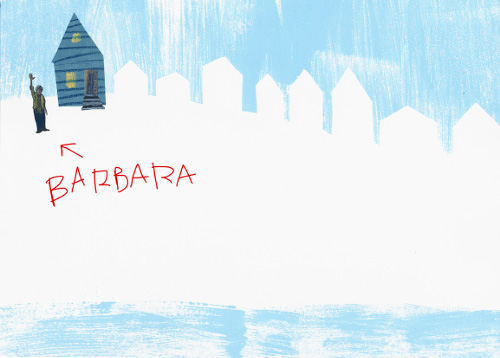
I didn’t even ask Barbara before I put her in a book. Next time I probably will.
This is my dog. Her name is Wednesday.
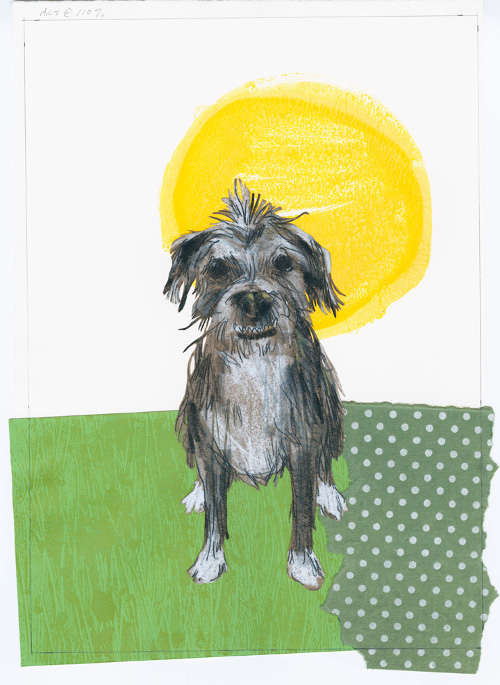
She’s in the book, too, and I didn’t ask her either. She doesn’t mind, though.
When I share my book with people, they inevitably ask me: What is real and what is not real? I don’t know! So for this essay I thought I’d avoid the real/not-real question and just talk about process — how did I make the book and where did it come from. But that brings me anxiety as well, because the How and the Why of this book are all wrapped up in my real life, too. I’ve never known less about how one of my books came into existence. When did I even start making this book?
Maybe it was when I bought a typewriter a few years back from a little shop in Amherst, MA. The man who sold me the typewriter spoke in unintentional poetry. Later that day, bored in a laundromat, I tried to remember and write down exactly what he’d said. But, really, I didn’t know I was making a book yet.
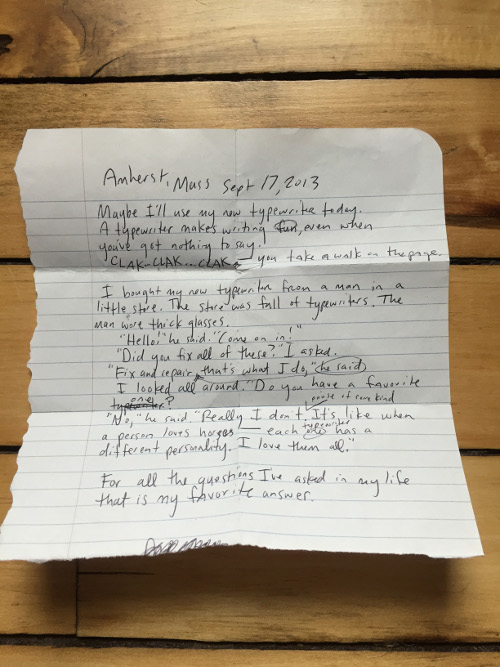
Maybe my book began when I met Frank, the turtle. My dog saw Frank first. And then we saw him every day for a week. I wrote down the memory before it stopped feeling important.
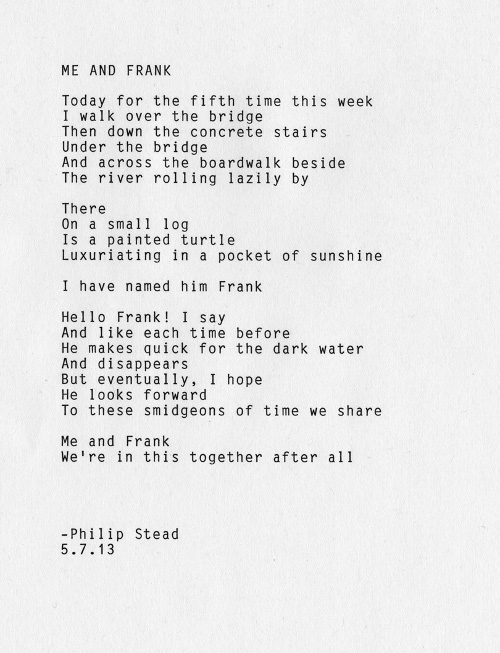

Or maybe I started this book twelve years ago when I rented a little upstairs apartment and became friends with my landlady, Barbara. Is it possible to work on a book for twelve years without knowing it? I don’t know.
What I do know is that one bad day, a couple years back, I took my dog, Wednesday, to the vet for a check-up. The check-up revealed a hidden cancer, and I remember coming home, feeling like the world had tilted suddenly, precariously, onto a new axis. I took a Polaroid of the sky that day, because I’d never felt so bad on such a nice day. I wanted to keep a record of it.

I did not want to work that day. I had no ideas, and all I wanted to do was take my dog for a long walk. I wanted to go wherever she wanted to go and not worry about time, or deadlines, or anything else. She had spent so many hours of her life watching me work; I felt like returning the favor. And besides, when the world had tilted, my head emptied out and I needed to refill it.
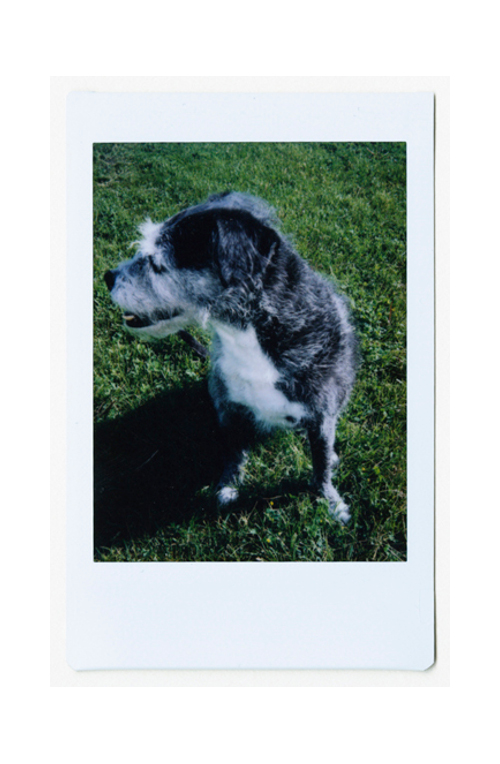
There are dogs, and then there are dogs. Wednesday falls into the latter category. We got Wednesday from the pound in Baltimore when Erin was still in art school. Erin was having a rough time creatively, and she credits Wednesday with getting her slowly back on track. There is no better medicine than a dog. It is not a stretch to say that without Wednesday there would be no Amos McGee. Wednesday’s full name, incidentally, is Wednesday McGee.
Walking with Wednesday that day and the days following became my studio time. It was on those long walks that the unlikely scraps of this book got stitched together. I thought about my time living at Barbara’s house. One day, while living there, I tripped on the front steps and spilled a bucket of blue paint onto the driveway. I didn’t know Barbara very well at the time, and I worried she’d be angry. Instead, when she came home, she took a piece of chalk and drew an outline around the paint stain. “How wonderful!” she said. “A blue horse!”
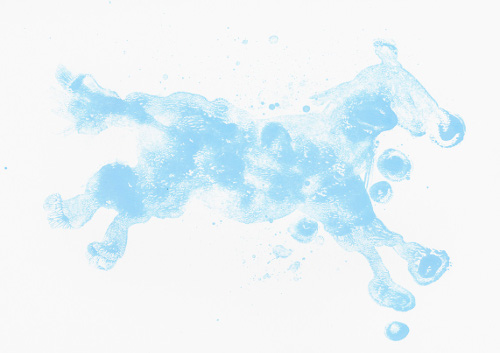
I think that moment taught me what art is. Art is a sort of kindness that transforms ugliness into a running blue horse. Twelve years later the blue horse is faded but still there (head on the left, tail on the right).
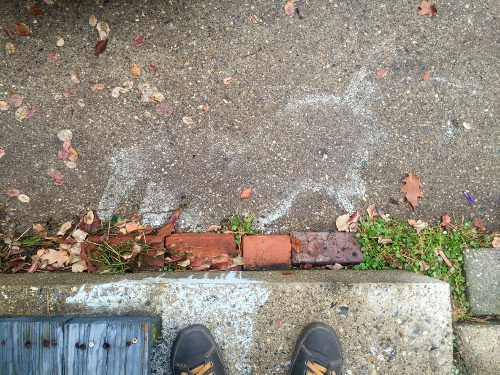
The blue horse follows me everywhere now.
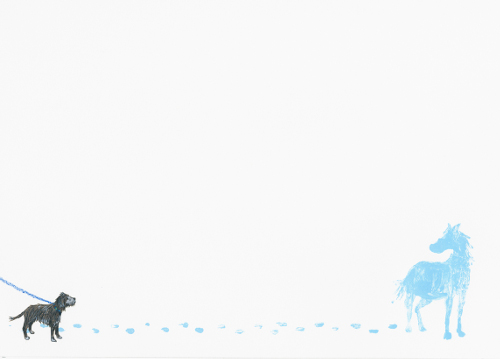
Over the next few months, my dog beat her cancer, and the Michigan weather turned cold. It was time to get inside and make a book. I had trouble at first deciding what the book should look like. I don’t work in one style, so most books begin with several weeks of anxiety about process. I wanted the book to be as spontaneous and unplanned as my walks with Wednesday. I didn’t want to work from a book dummy or from sketches. I didn’t want to sit at my desk for hours. I wanted to wander around the studio and make a mess. Most importantly, I wanted every image to represent a single, complete day in the studio — one day of improvisation.
The blue horse was my guide. I started experimenting with monoprinting — painting, spilling, and splashing paint onto a sheet of acetate, laying down paper, and pulling up impressions.
Some monoprints were just for practice. I made one of my dog.
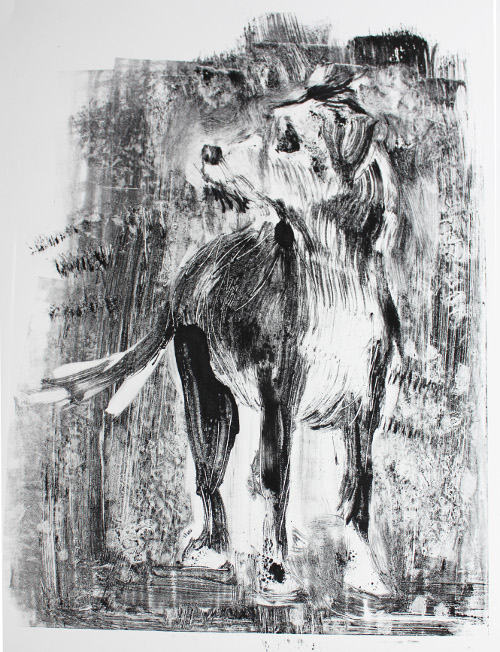
And one of a black-capped chickadee:

Lots more ended up in the trash.
I experimented with cardboard printing, too. I would cut shapes out of cardboard, apply paint to one side, and then stamp the image.
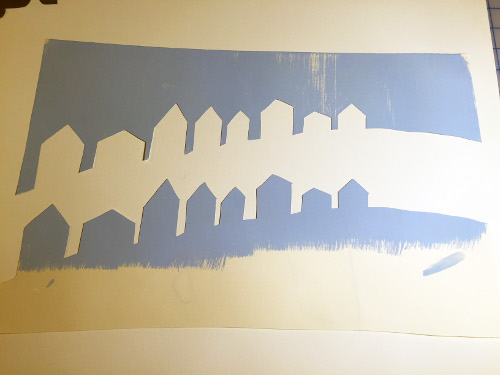
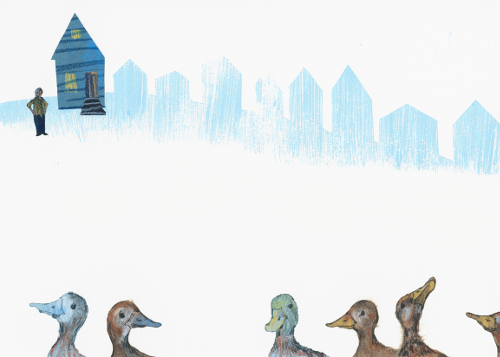
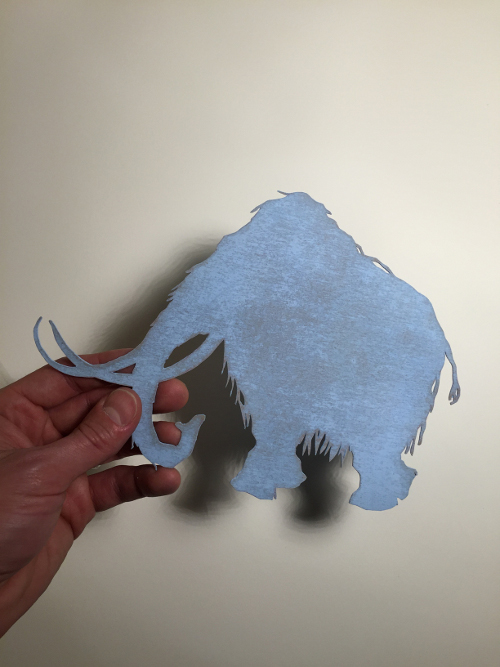
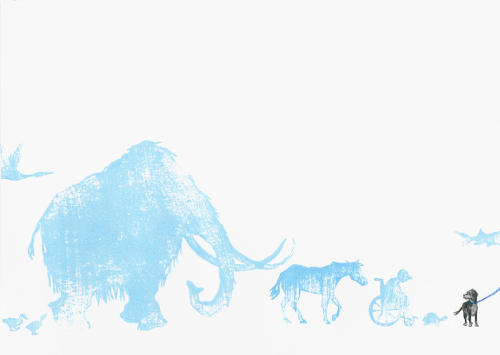
I know of one other book that used cardboard printing — the Caldecott Honor book, The Wave, illustrated by Blair Lent.
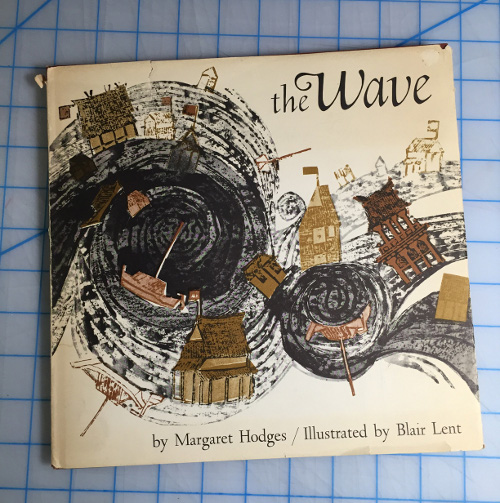
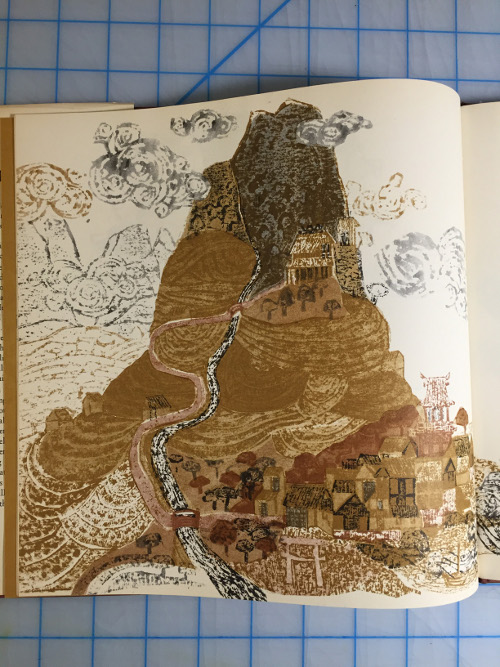
Lent’s cardboard prints are to the Sistine Chapel what my cardboard prints are to a kindergarten craft project. But that’s okay.
Working off of whims, I invented other crude printing methods. I would paint one side of a piece of paper, press it onto another sheet of paper, and draw on the backside. The pressure of my pencil would reveal a ghost image, like using carbon paper.
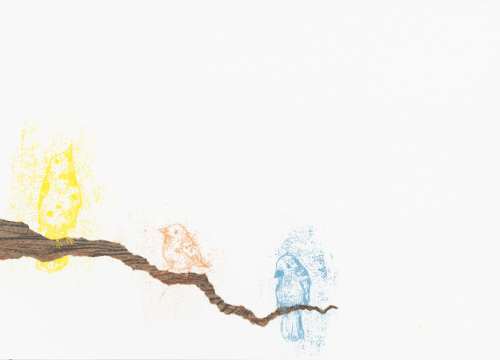

This would get interesting (and frustrating), because the paint would dry in about two minutes. I drew about fifty unfinished Empire State Buildings before I could finally knock one out, whole, in less than two minutes.
I used a similar method to turn my typewriter into a printing press. The pressure of the roller and the keys would leave their impressions on the paper. It seemed like a nice way to make bird sounds.

There were parts of the books that needed to be more solid and real. To avoid sitting down to make “real” art, I started drawing, mostly in crayon, on scraps of brown packaging paper. Then I would cut and tear the results and paste them into the book to make ducks and dogs and people and things.
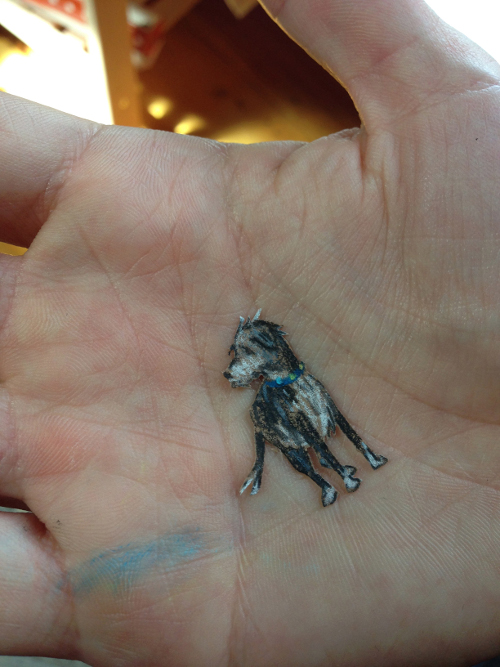
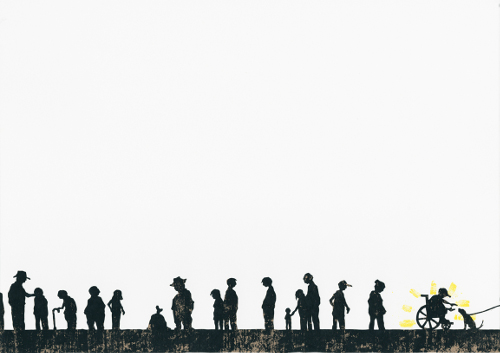
I think it was Erin who suggested I start pairing my images with photos from my Polaroid camera.

The Polaroids could help bridge the gap between what was real and what was not real.

I love my Polaroid camera. One thing that make me sad about the digital age is that photography is slowly being stripped of its meaning. It’s been killed by quantity. Now that there’s a camera on every phone, the whole world is going mad, obsessively documenting and editing life, not for posterity but only for the moment. Memories last as long as they stay current on an Instagram feed and then they fade into the cyberoblivion, where there is so much of everything that it ends up amounting to nothing at all. The Polaroid camera is antithetical to this. There is something spiritually correct about a Polaroid photo. Its fuzzy imperfection resembles memory in ways that images made from ones and zeroes cannot. A Polaroid camera turns a memory into an object that I can hold, and I love that.
Here’s one a took yesterday with a brand new camera. (Yes, they still make Polaroid cameras!) …
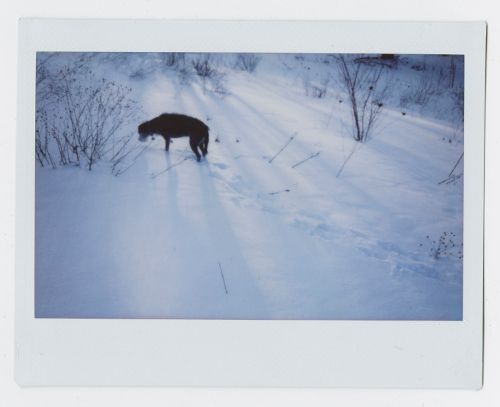
So, now the book is a book, and I don’t know what to think about it. It might be my favorite book that I’ve made, but it’s also the hardest one for me to open and enjoy. There is something disquieting about turning your memories into an object. The book is full of its own fuzzy imperfections and, like my memories, it is inaccurate and disjointed and constantly changing. Is it real or is it not real? I can’t decide. But I can walk around and hold it in my hand. And that’s something.
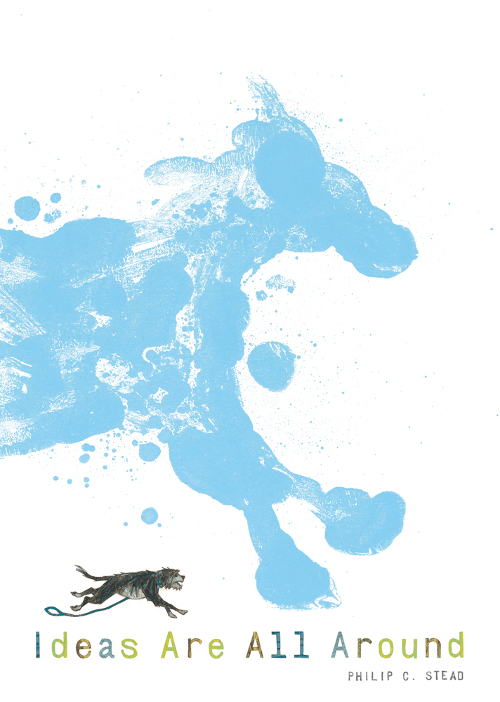
IDEAS ARE ALL AROUND. Copyright © 2016 by Philip C. Stead. Published by Neal Porter Books/Roaring Brook Press. All images used by permission of Phil Stead.
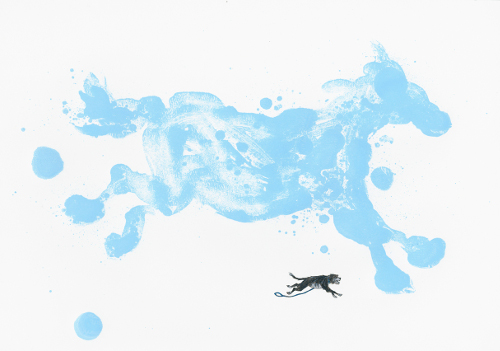

I love process posts, and this one is inspiring. Many thanks, Philip & Jules!
I loved this story. I found the illustrations and story to flow so perfect together. But now that I’ve read the process behind it I’m in love with the story even more. Thanks for sharing Philip!
I really enjoyed the post and loved reading about the illustration process. I then went and read Julie’s interview/e-mail exchange on Number 5 bus presents…which motivated me to comment. I don’t ever comment, I think this is my first one, but I wanted you to know how much I enjoy reading 7 imp and Number 5 bus presents. Thank you Julie, Philip and Erin!
Oh, thanks, Kate! Phil has visited 7-Imp many times. My archives page is sorely out of date. But you can always hit the search box and type in his name if you are interested in reading more.
Thanks, all!
A really charming post. I love the way ideas float in and out, and how some remain like old friends. Thanks!
This gives me goosebumps. In a good way. Beautiful.
[…] Stead‘s homepage “Philip C. Stead Shares a Short Essay on Anxiety and the Making of Ideas Are All Around” care of Seven Impossible Things Before Breakfast The Arrival by Shaun Tan Rebecca Stead and […]
I really like this post. It helps me understand the meaning of pictures in his book. Some stories are so sad, but I’m glad that I’d read it.